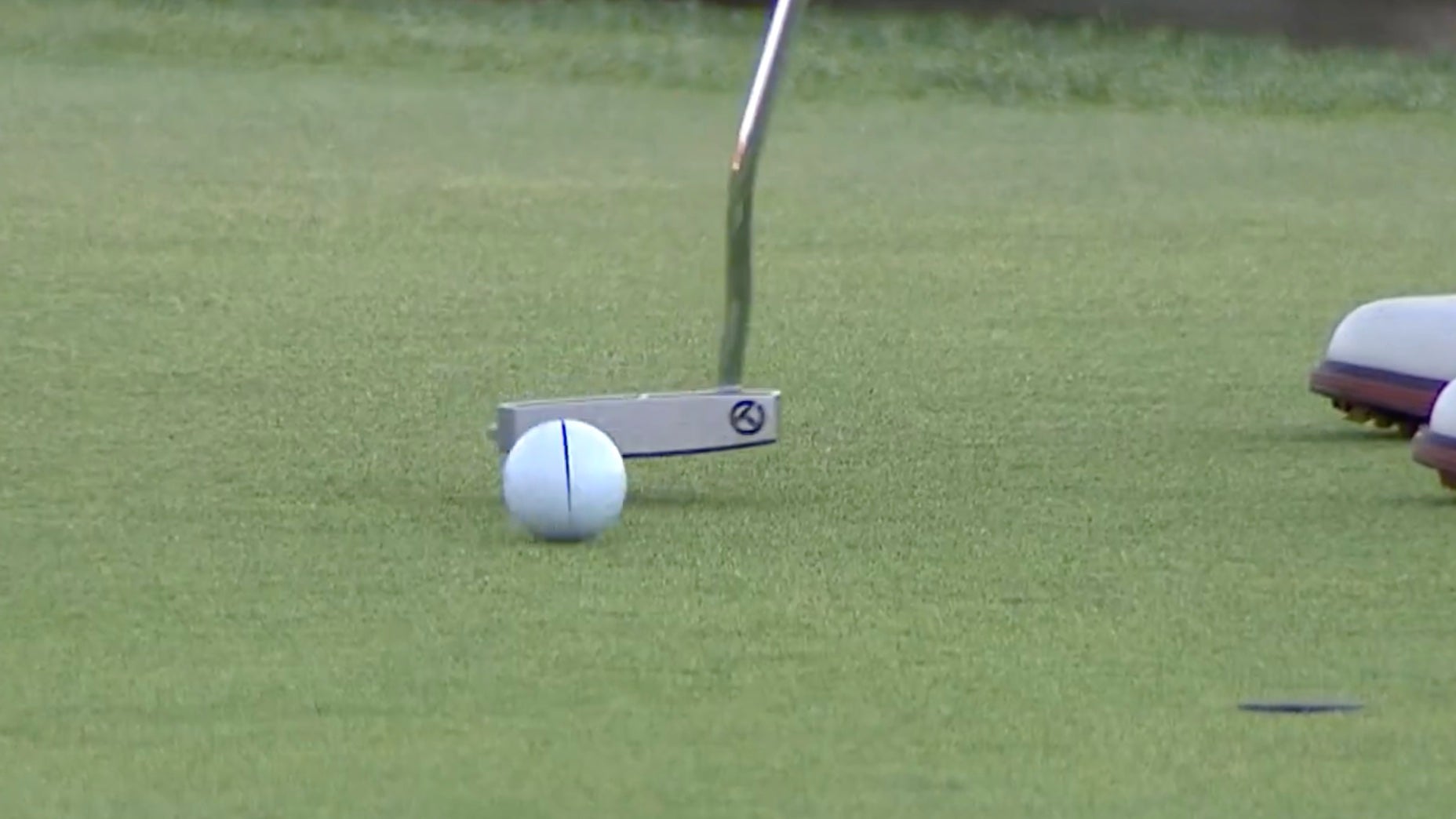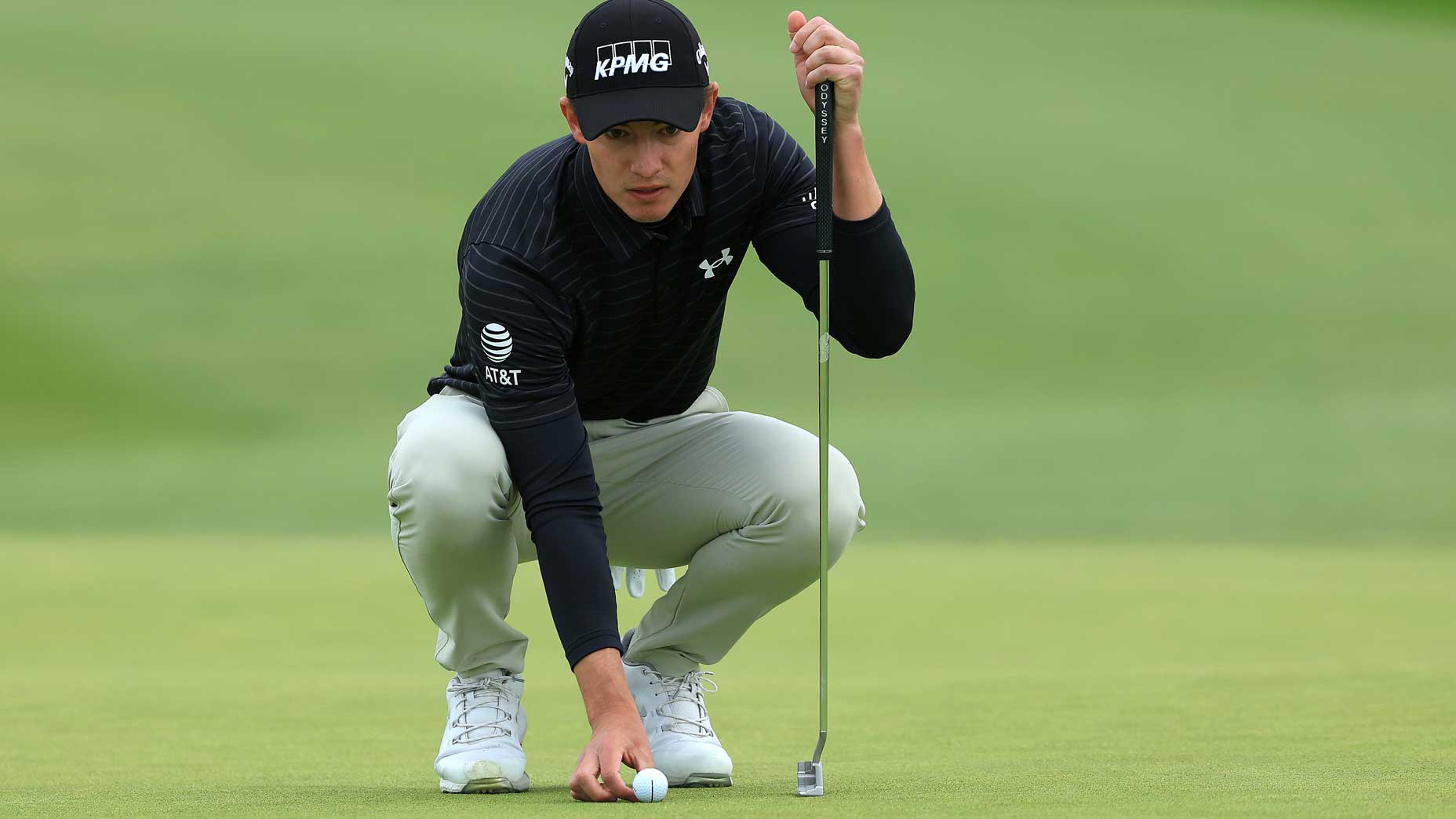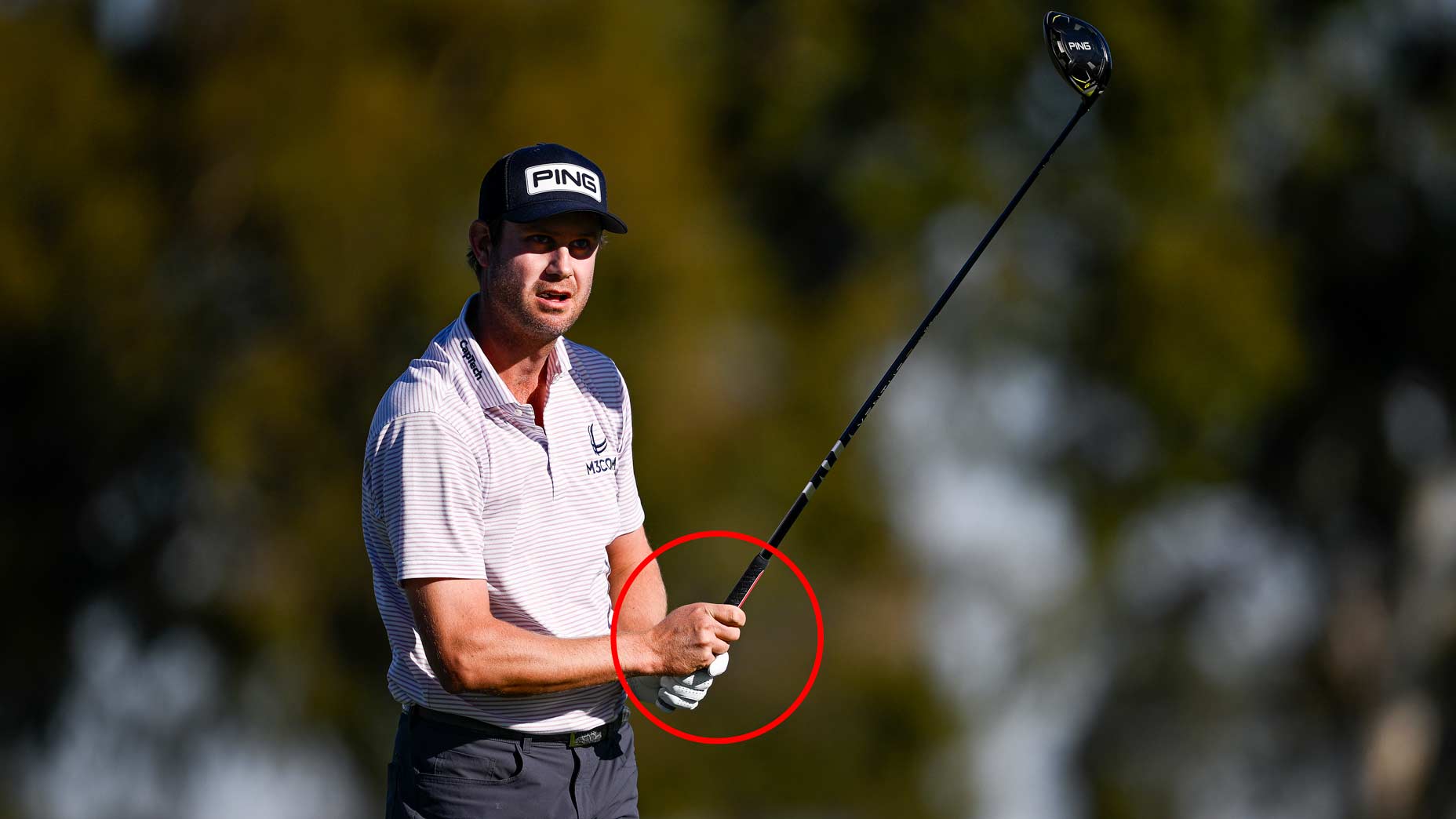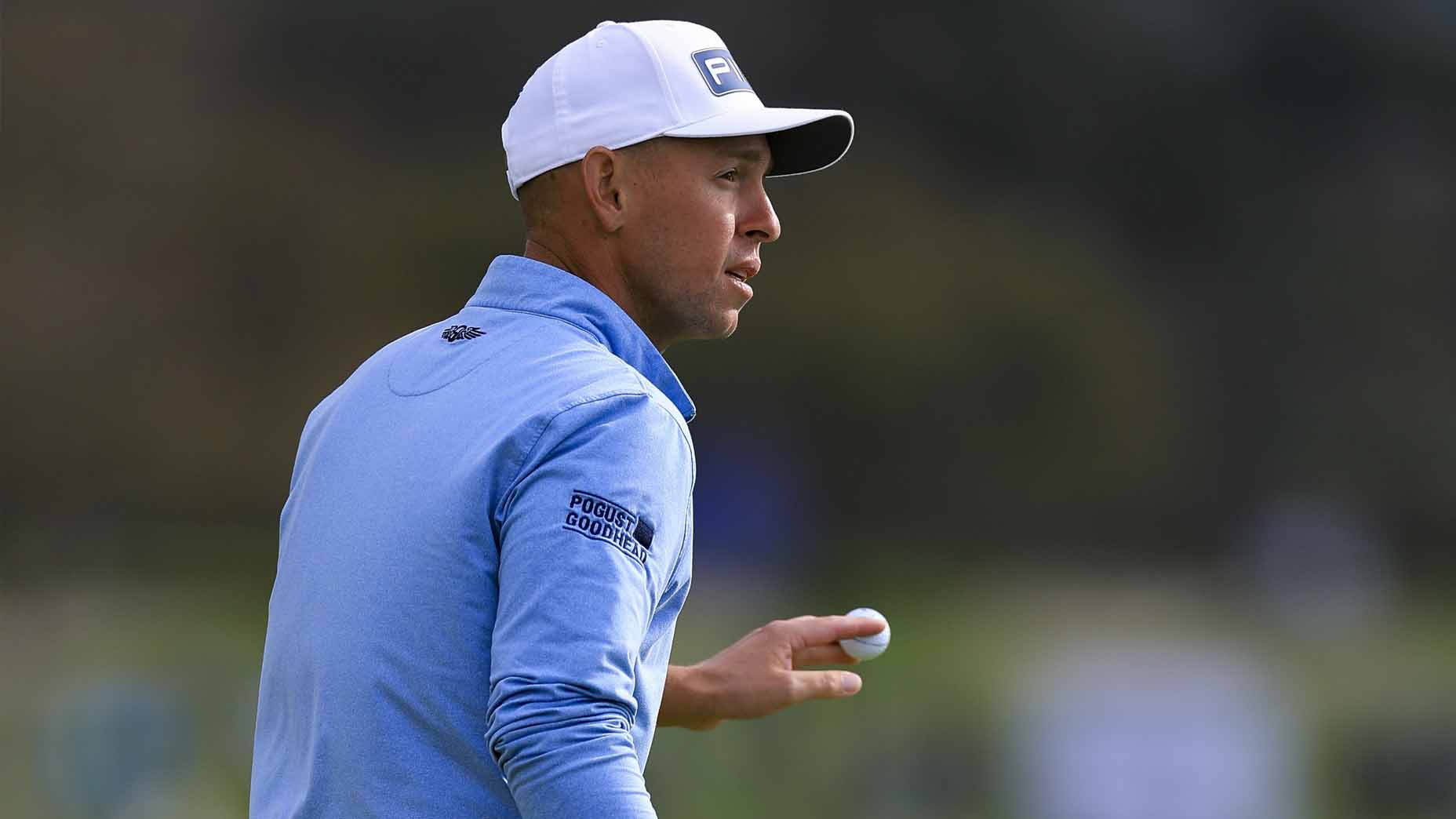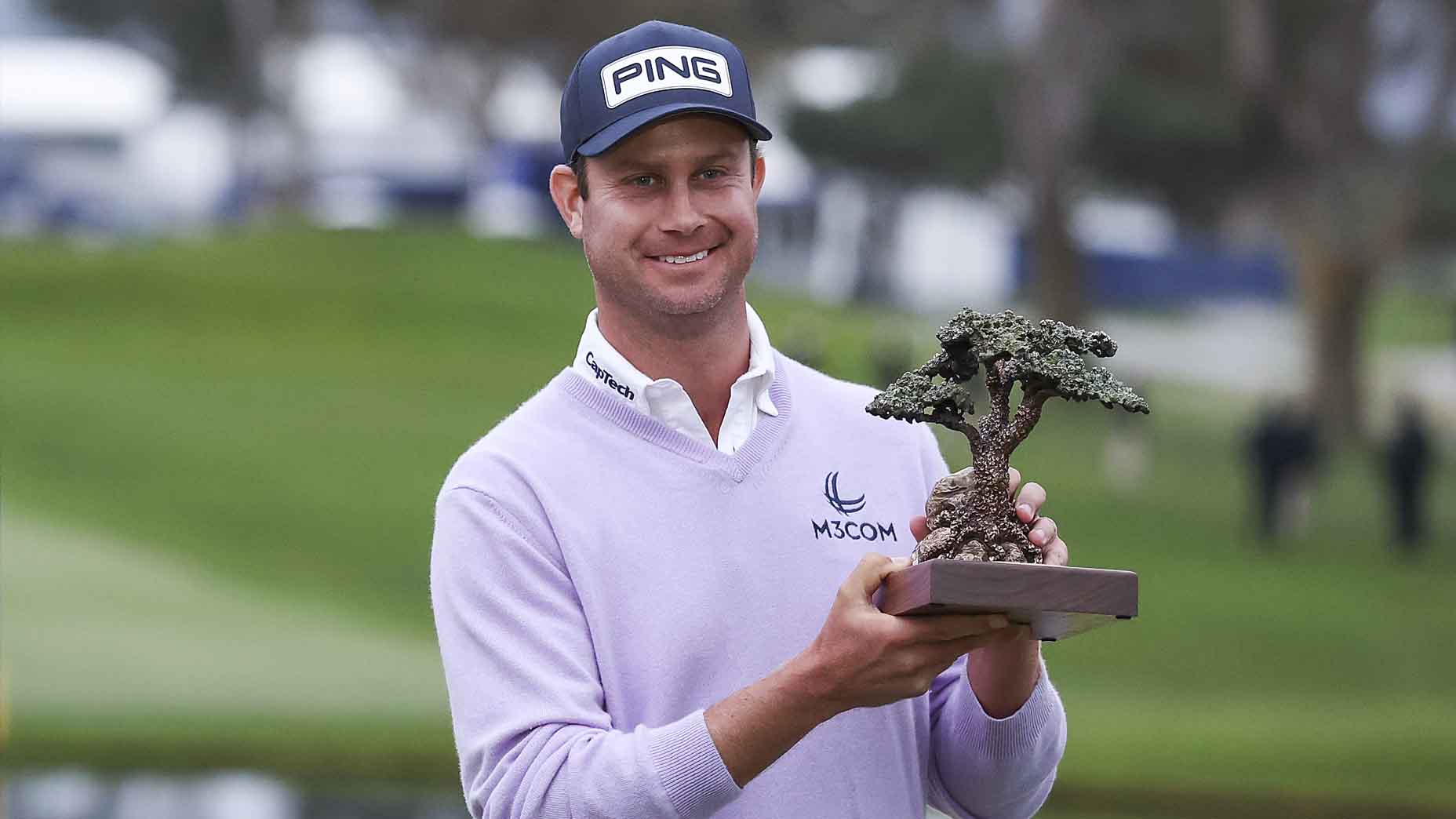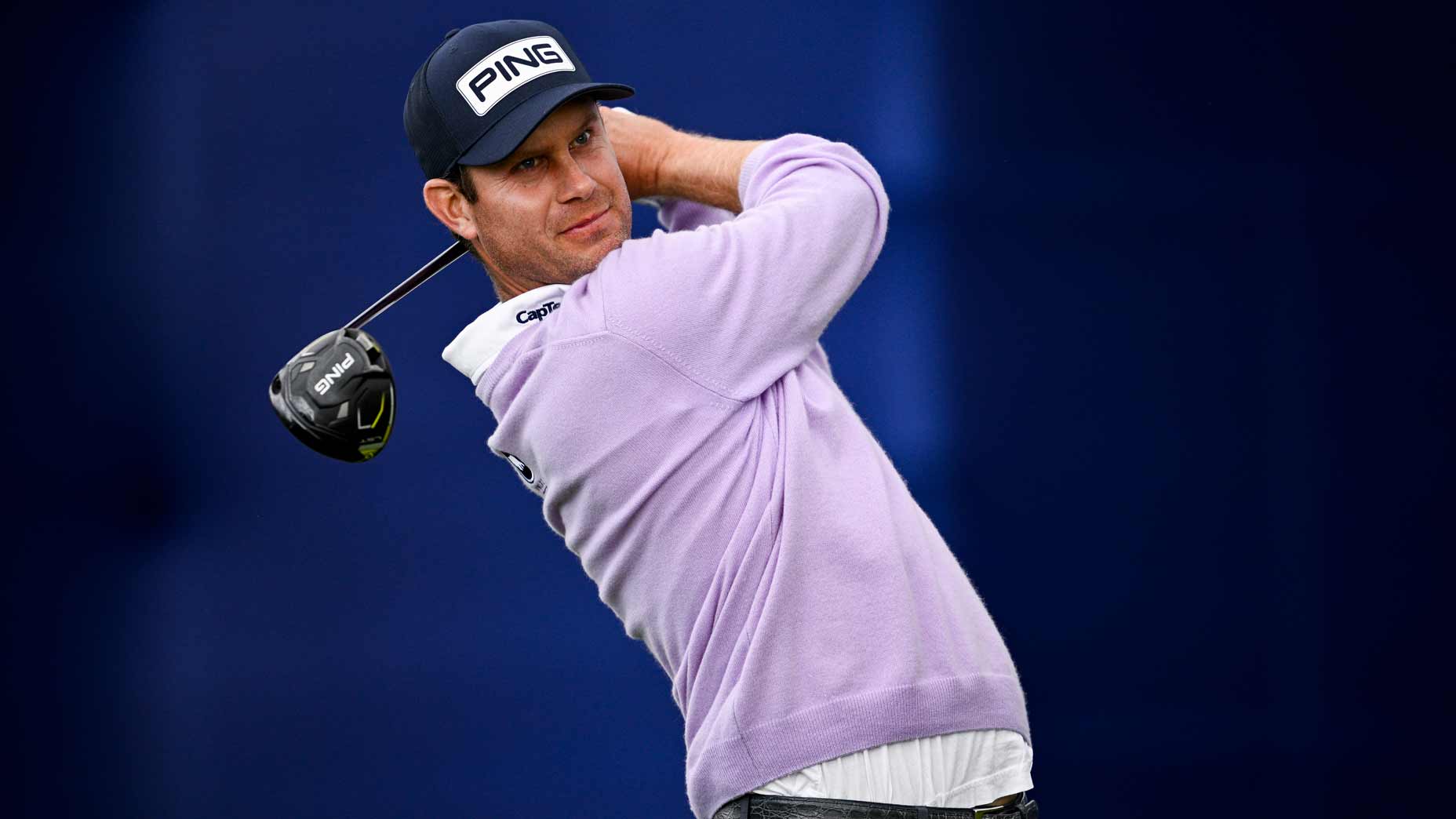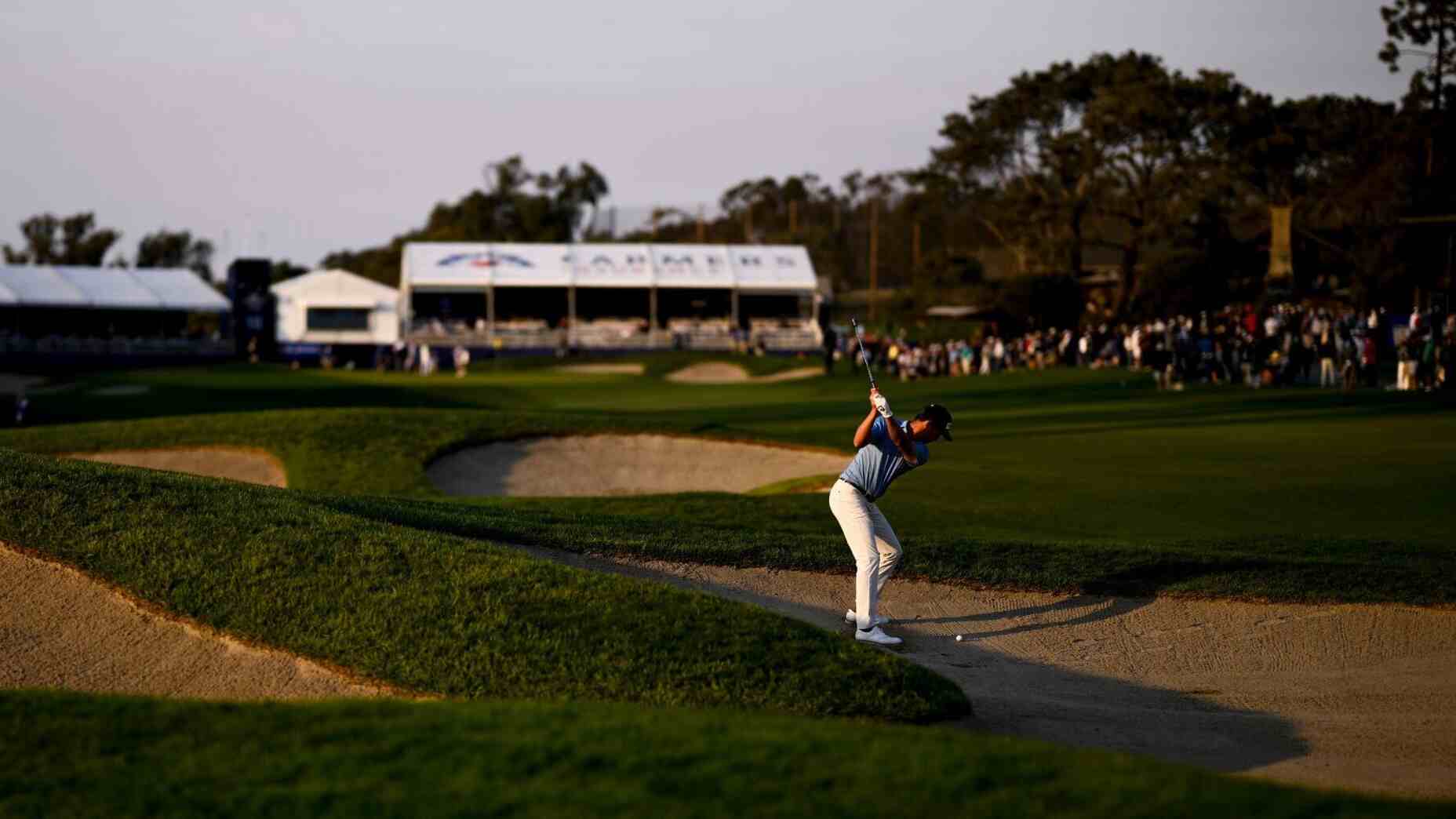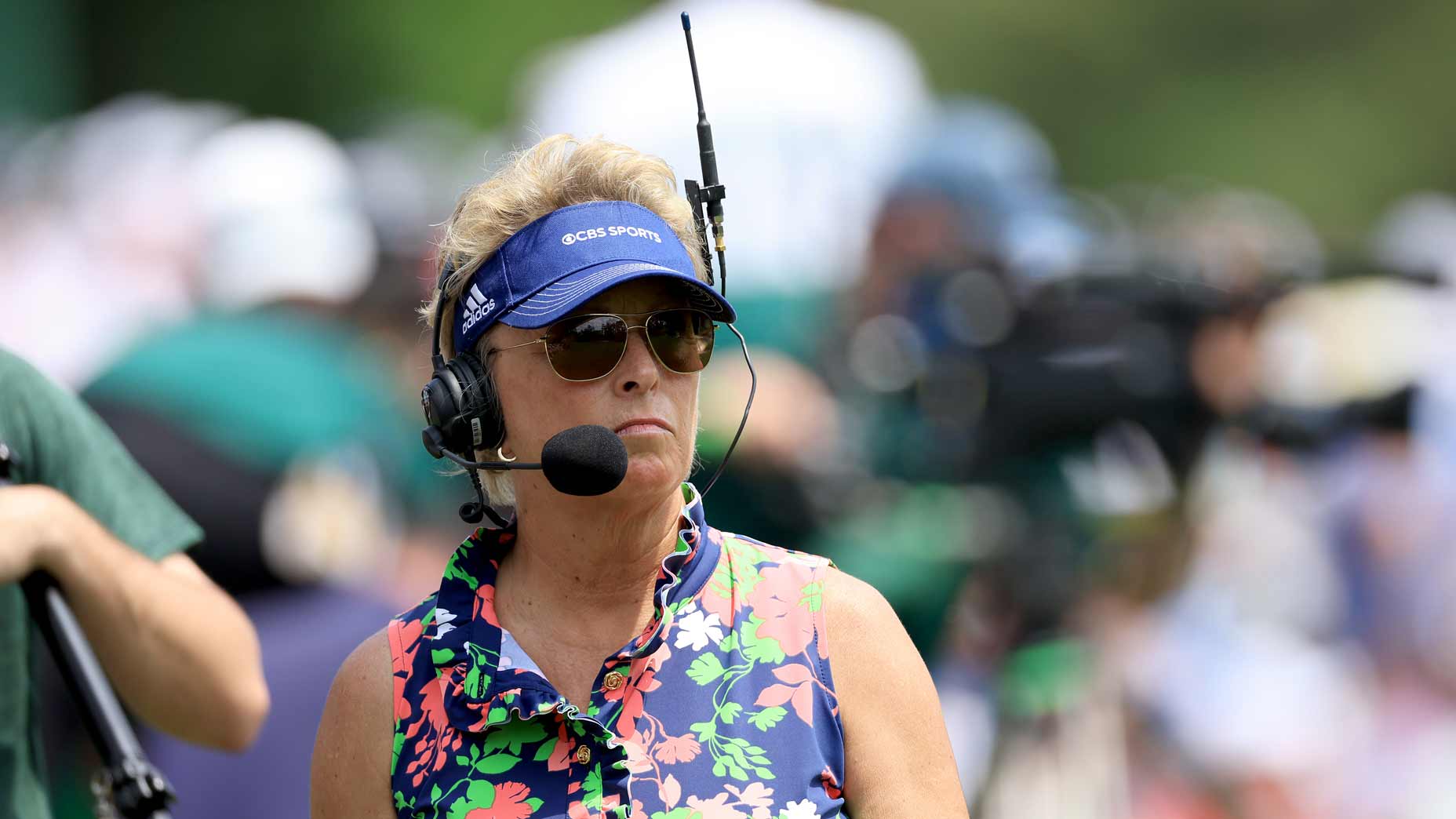For those who failed to catch the conclusion of the Farmers Insurance Open, take a quick minute and watch the replay of Will Zalatoris’ missed 8-footer on the 72nd that ultimately forced a sudden-death playoff with Luke List.
It’s easy to fixate on the ball snapping hard left at the cup, but let’s back up a second and start at the point where Zalatoris’ putter impacts the golf ball.
What do you notice?
As Zalatoris releases the head, the face impacts the ball squarely on the toe side of the putter — a location that could be categorized as a mishit. Nerves certainly come into play on a putt for your first PGA Tour win, but it’s interesting to look at the science behind a missed putt from inside 10 feet as well.
Gene Parente, founder of Golf Laboratories and Fully Equipped co-host, conducted robot testing on putts from 10 feet and found that impacting the ball just a half-inch from the center on the heel or toe causes the ball to move roughly 2 to 3 inches offline.
Assuming you have a relatively straight putt, mere inches can be the difference between making the putt and watching it slide by the cup.
How this pro could improve his putting stroke — through dental equipmentBy: Nick Piastowski
Why mishits send the ball offline
The gear effect on a heel miss should cause the ball to leak left, while a toe miss usually heads to the right. Zalatoris’ ball actually does the opposite on the miss, but Parente confirmed some mallet putters — Zalatoris uses a Scotty Cameron mallet — he’s tested produced the opposite gear effect, with toe strikes crossing over the target line and ending 2-3 inches to the left.
What we can all learn from Zalatoris’ agonizing miss is that consistent impact is crucial on putts from shorter distances. Employing a high-MOI mallet can reduce twisting at impact and allow you to get away with the occasional heel or toe strike, but nothing beats a ball coming out of the dead-center of the face.
The next time you head to the practice putting green, spend a few minutes working on consistent impact. It could wind up being the difference between making that 8-footer for birdie or settling for par.
